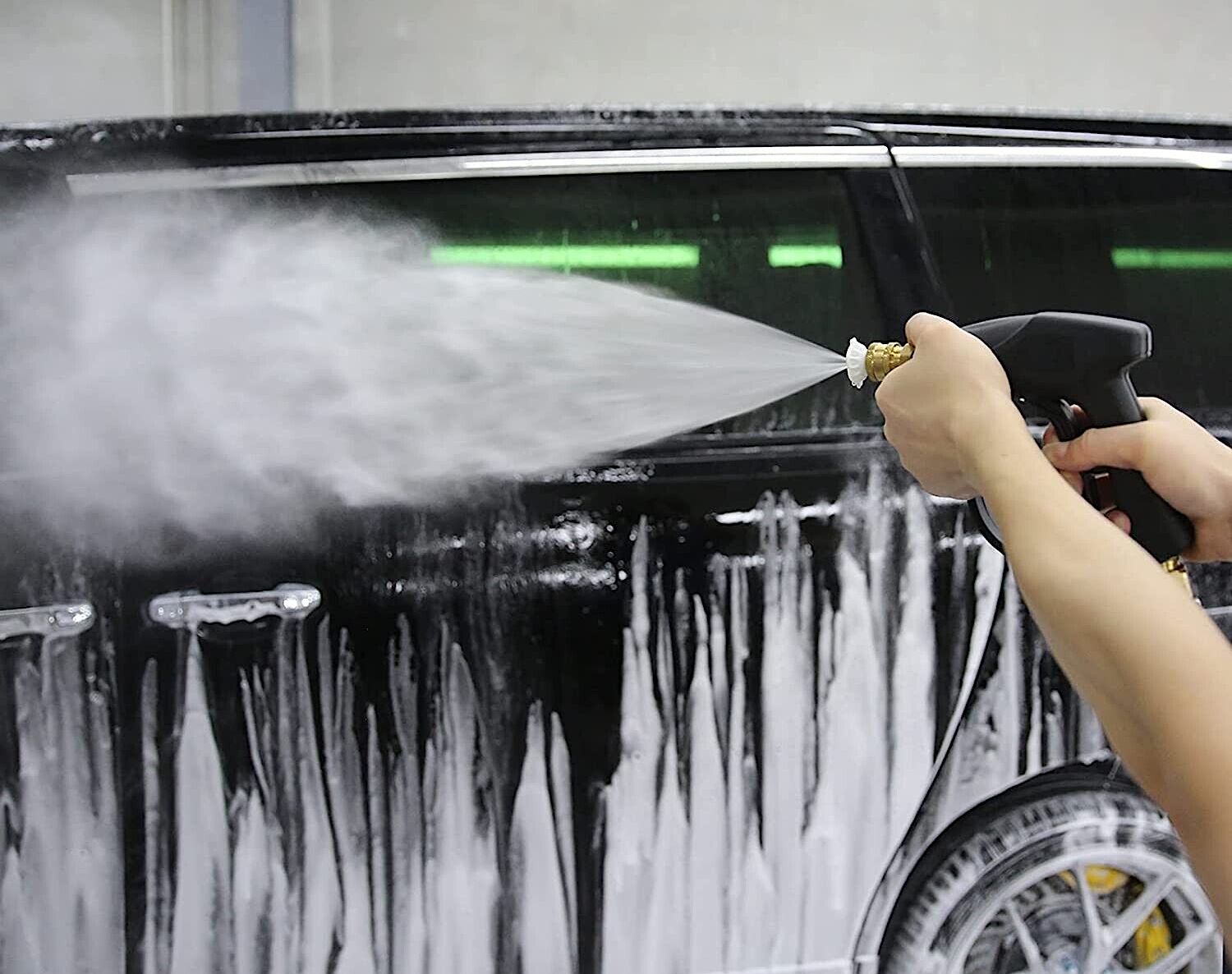To remove overspray from your car, use a clay bar and lubricant to gently scrub the affected area. Avoid using harsh chemicals or abrasive materials that may damage the vehicle’s paint surface.
Table of Contents
1. Understanding Overspray On Cars
In order to remove overspray from your car, it is important to understand what overspray actually is. Overspray refers to any unwanted paint particles that land on the surface of a car during a painting process. There are several common causes of overspray, such as incorrect painting techniques or weather conditions that cause paint to drift.
Overspray can come in different types, including dry overspray, wet overspray, and clearcoat overspray. Each type requires different removal techniques. To remove overspray from your car, you can try methods like using a clay bar, using a solvent or paint cleaner, or seeking professional help.
Taking the necessary steps to remove overspray will help restore your car’s appearance and protect its paint job.
2. Assessing The Severity Of Overspray
Assessing the severity of overspray on your car is an essential step in the removal process. Begin by identifying the extent of the overspray, carefully examining the affected surfaces. Next, determine the type of paint that was used, as this will help you choose the appropriate removal method.
Finally, assess the impact on the car surfaces, checking for any damage or discoloration caused by the overspray. By thoroughly evaluating these factors, you can effectively plan and execute the removal process, ensuring that your car is restored to its original condition.
Take your time and be meticulous in your assessment to achieve the best results.
3. Preparing The Car For Overspray Removal
To prepare the car for overspray removal, it is important to gather the necessary tools and materials. This ensures a smooth and effective process. Start by safely cleaning the car, using precautions to protect surrounding surfaces. Avoid any damage or scratches by using suitable cleaning products and techniques.
It is essential to be careful and thorough while cleaning, paying attention to all areas affected by overspray. By following these steps, you will be ready to tackle the overspray removal process with confidence.

Credit: www.ebay.com
4. Various Methods For Removing Overspray
To remove overspray from your car, there are various effective methods you can try. One method is using the clay bar technique. Firstly, lubricate the surface to ensure smooth gliding of the clay bar. Then, apply the clay bar gently, working in small sections to remove the overspray particles.
Another method is polishing and compounding. Choose suitable polish and compound for your car’s paint type and apply it, buffing the surface to eliminate the overspray. Lastly, chemical overspray removers can be used. Select the appropriate remover and apply it, allowing it time to work.
Finally, remove any remaining overspray using a microfiber cloth. These methods can help you achieve a clean and smooth finish on your car, free from any unsightly overspray.
5. Special Considerations For Clear Coat Damage
Clear coat damage can be easily identified by checking for signs such as scratches, dullness, or discoloration. To repair the damage, follow these steps: Firstly, clean the affected area using car soap and a soft cloth. Next, sand the damaged clear coat with fine-grit sandpaper until smooth.
Then, apply a clear coat compound and buff the surface with a polishing pad. Finally, seal the repaired area with car wax to protect it. To prevent clear coat damage in the future, avoid parking under trees or in direct sunlight, as these can cause fading and UV damage.
Additionally, regularly wash and wax your car to maintain a protective layer. Taking these preventive measures will help keep your car’s clear coat looking its best for years to come.
6. Final Touches And Protection
After removing the overspray from your car, it’s important to give it those final touches. Applying wax or sealant can provide added protection to the surface. By doing this, you can maintain a clean and protected car surface. This step ensures that your car remains in good condition and prevents any future overspray issues.
Regular maintenance of your car’s surface is essential to keep it looking its best. Your car will be well-protected against any potential damage or contaminants. So, make sure to give your car that extra layer of protection to keep it shining and free from overspray.
7. Seeking Professional Help
When overspray on your car becomes too stubborn to remove on your own, seeking professional help is necessary. It is important to choose a reputable service that specializes in overspray removal. By doing so, you can ensure that the professionals have the right tools and techniques to effectively remove the overspray without damaging your car’s paint.
Evaluating the cost factors and expectations is also essential before opting for professional intervention. While it may come at a cost, the expertise and experience of professionals can save you time and effort in trying to remove the overspray yourself.
With the help of trained experts, you can have peace of mind knowing that your car will be restored to its original condition.
Conclusion
Removing overspray from your car may seem like a daunting task, but with the right techniques and tools, you can restore your vehicle’s appearance to its former glory. By following the steps outlined in this blog post, you can effectively remove overspray without causing damage to your car’s paintwork.
Start by washing your car thoroughly to remove any loose particles, then apply a suitable overspray remover or clay bar to gently lift away the overspray. Use a microfiber towel to buff and polish the affected area, and finish off by applying a layer of wax or sealant to protect your car’s paint.
Remember to take your time and work in small sections to ensure the best results. With patience and care, your car will be back to looking its best in no time.
